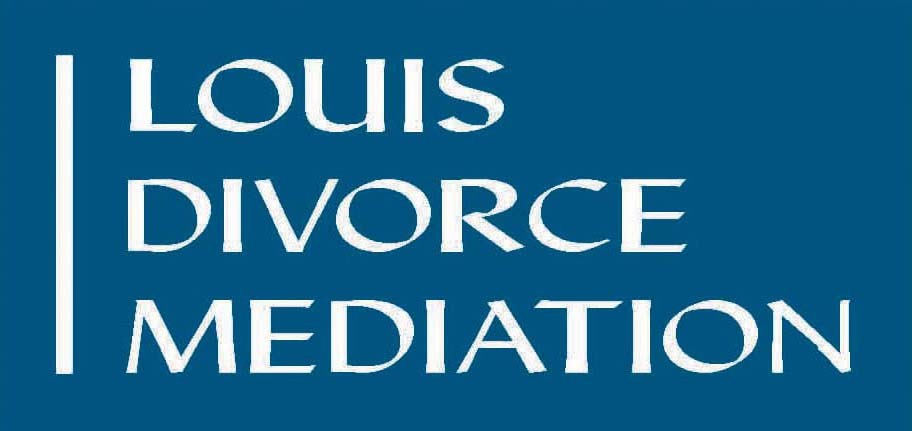Louis Divorce Mediation ~ Online and In-Person Mediation in Chicago
|
Families already are facing financial pressures from rising prices. Now there is a new challenge: the Federal Reserve Bank has increased interest rates for its member banks to levels not seen in over 15 years. On September 30, according to bankrate.com, the average 30-year mortgage rate increased to 6.83 percent.
This means that the monthly mortgage payment for a new mortgage (and this would include refinancing a mortgage) will be significantly higher. For example, for a mortgage loan of $300,000 one year ago (September 30, 2021), the 30-year rate was 3.01 percent, so the payment for mortgage principal and interest was $1,266.43 monthly. At 6.83 percent, that same payment would be $1,961.77, almost $700 higher each month, and over $8,000 more each year. Not only will this interest-rate increase impact the affordability of refinancing a mortgage, but it will also make approval more difficult. Mortgage lenders submit applications for refinancing to underwriters, who follow strict approval criteria. One of the most important measurements of the ability to pay is the percentage of income that is committed to debt repayment. With the increase in monthly payments due to higher interest rates, the debt-to-income ratio will go up, rendering some ineligible for refinancing. Since many divorce mediation cases involve a discussion about how to address the home that the couple owns together, conversations—in the face of higher interest rates—may prove to be more challenging. Since many divorce mediation cases involve a discussion about how to address the home that the couple owns together, conversations—in the face of higher interest rates—may prove to be more challenging. Some may decide to postpone a buyout into the future, hoping for interest rates to decline or for increases in income. This strategy depends on whether the person who will no longer be living in the house is willing to remain on a mortgage for property no longer lived in. While most agreements provide protections to the non-resident owner for payment responsibility, that individual will continue to be listed on the mortgage. That listing can impact the ability to take on new debt for another residence. In some cases, there may be no alternative except to sell the home. However, in considering this option, it’s important to understand that the future cost to either rent or pay a new mortgage may exceed the current mortgage cost. This is why, in mediation, we look very carefully at all of the options and evaluate the advantages and disadvantages of each possible scenario. As a mediator, I am also aware that mortgage financing, whether it pertains to buying a home or refinancing a current mortgage, can be complicated. Fortunately, there is a group of specially trained experts known as Certified Divorce Lending Professionals (CDLPs) who can be called upon to assist my clients by looking at their specific circumstances and offering ideas and analysis to clarify possible options for moving forward. Using mediation and specialized professionals can lead to a much clearer focus on the possibilities for addressing the challenges of current financial conditions.
0 Comments
Let me share a story from a colleague—a situation many divorce mediators have experienced.
Steve and Nancy came to mediation. They worked with their mediator to develop a plan for their divorce. Many decisions were made, based on information being shared, options being explored and evaluated, and some amount of negotiation and compromise. They each decided to hire an attorney to review the agreements they made in mediation. Steve hired an attorney who also mediates. Steve’s attorney had certain questions about their agreement, and Steve explained his reasoning for why he agreed to make certain decisions. Nancy engaged an attorney who is a seasoned divorce litigator. This attorney told Nancy that he would reach out to Steve’s attorney and attempt to renegotiate the mediated agreement or suggest that Nancy litigate the divorce so she could obtain a better outcome for herself. The attorneys spent several months negotiating an agreement different from what was reached in mediation. Steve was anxious to complete the divorce process and gave in on many of the issues. What started as a cost-effective, amicable process involving decision making to meet personal needs changed into a more adversarial and costly legal process that placed advocacy ahead of collaboration. Both Nancy and Steve became disenchanted with the mediation process and the attorneys. As a divorce mediator, I encourage you to seek legal representation when it is important for you to have the legal support that I cannot offer as a neutral mediator. However, the choice of a review attorney…can greatly influence the process. As a divorce mediator, I encourage you to seek legal representation when it is important for you to have the legal support that I cannot offer as a neutral mediator. However, the choice of a review attorney, as seen in the above example, can greatly influence the process. No mediator can protect you from an experience like the one encountered by Steve and Nancy. On the other hand, there are some the steps I take to reduce the likelihood of an agreement reached in mediation being unraveled by review attorneys:
When you decide to mediate your divorce, you are acting on the principle that you can make your own decisions about how to end your marriage, which may include getting legal advice or a constructive legal review of the decisions you’ve made. With information, preparation, and legal assistance that respects the mediation process, you will be far less likely to suffer the fate of Steve and Nancy. New clients often ask me what they need to do to prepare for the mediation process. There are two parts to the answer:
Preparing to make important decisions As a mediator, I want you to have as much information as possible to be ready to discuss all the important topics that will arise in a divorce mediation—whether those relate to your children, your assets and debts, or your financial needs. I provide you with:
Preparing for productive dialogue Some clients, even though their marriage is ending, have the ability to conduct respectful and meaningful conversations on their own. However, many don’t. You shouldn’t be surprised if you’re uneasy about the prospect of having to engage in a challenging conversation with your soon-to-be ex. It could be difficult to talk about creating separate futures involving co-parenting, separating finances, and attempting to agree on arrangements for support to establish two financially sustainable households where the needs of the children are met. You cannot control your ex’s thoughts, speech or behavior, but you can prepare yourself for mediation by raising self-awareness to help you be at your best. You cannot control your ex’s thoughts, speech or behavior, but you can prepare yourself for mediation by raising self-awareness to help you be at your best. And if you and your ex are both more self-aware, that can help you to be more ready and focused on the quality of your dialogue in your mediation sessions. As your mediator, I work with both of you, providing you with exercises in advance to promote greater self-awareness. Such exercises help you reflect on a number of questions:
Just as athletes exercise and train before they compete, this self-preparation can make you ready to move past the communication challenges of the past and reset yourselves for better conversations in mediation. Often your most valuable asset, the family home is the focus of significant negotiations in most divorce mediation cases. This second installment on that subject looks at logistical factors you need to consider in deciding the future of that home.
Note: Financial issues surrounding home ownership and sale during divorce can seem daunting. As an experienced mediator with decades of experience in finance and accounting, I offer my clients expert help in making sense of everything they need to understand to make thoughtful decisions about the future of their home. I urge clients to review and revisit the kind of information described below, note questions and comments, and allow me to guide them through the financial maze. Hopefully reviewing the major topics here will help you consider your own situation with greater clarity. Can you refinance? It is one thing for spouse A and spouse B to agree on who will keep the house, and they may even be able to agree on a value on the house, whether by appraisal or a number that both find acceptable. However, if you are going to buy your ex out (or vice versa) and you are both listed on the mortgage, chances are that the person not staying in the house will want to come off the mortgage to obtain their own future credit for another home purchase and avoid any residual liability for being listed on a mortgage that you’ve agreed to pay for. This means having to refinance the current mortgage and being qualified to do so. Your income and current debt will be significant factors in qualification, and any income from child support or maintenance will need to be paid for a minimum period of (usually) six months before an application for refinancing can commence. As a result some cooperation about an interim plan may be needed. Before looking at a refinance, I suggest that you check with your lender about whether there is any possibility that you (or your spouse, if they are keeping the house) can assume the current mortgage in their name alone, meaning that the other spouse would be taken off the loan without any of the terms (like interest rate, especially if low) being changed. While not many lenders allow this, some do. Keeping a low interest rate (in a rising interest rate market) can be a huge monthly savings. On the other hand, assuming a mortgage will not give you the ability to obtain cash through borrowing for a buyout, so another lending source may be needed for the resources to pay your ex their share of the equity. Transaction Fees Refinancing is not inexpensive. The lender will have an origination fee, and there are other costs that will be encountered in a refinance. Lenders should be able to provide detailed estimates. Some costs can be included in the amount to be borrowed; others may need to be paid in advance or at closing. If the ownership of the residence will be transferred from joint ownership to you (or your ex), a deed will need to be prepared and filed. Transfer taxes on the property transfer may be levied, just as if the home had been sold to a third party. Many municipalities will not waive the transfer tax if the transfer is between former spouses. Some may waive the fees if the transfer takes place before the divorce is finalized. How much is your home worth? If you decide to sell your home, you can find out its value, as it will be listed on the open market. Hopefully, you will soon receive offers to sell at a price you can accept, which will represent the value of your home. Any realtor you work with will have done research to assist you in arriving at a good listing price. In a buyout, it’s not as simple. Since your home is not being listed for sale, no one will be making an offer. Most would agree that a professional appraisal (usually costing $300-$500) is an objective method for valuation. It’s also possible that the home was recently appraised for a refinance. Another option is to use a bank appraisal as the measure of value if the home is being refinanced. What’s the right plan? The mediation process will involve a thorough review of options and any additional research or obstacles to be overcome in deciding how to handle the family home. This information will give you the chance to develop a plan that best meets everyone’s needs. The mediation process will involve a thorough review of these options and any additional research or obstacles to be overcome in deciding how to handle the family home. This information will give you the chance to develop a plan that best meets everyone’s needs. In many divorces, the family home may be the most valuable asset. Unlike other financial assets, there is no practical way to divide a house!
In almost every mediation case, the choices are limited to these possibilities:
On the surface, it would seem simple to make one of these choices [about handling the family home], but often it is not. A number of factors can complicate the decision. On the surface, it would seem simple to make one of these choices, but often it is not. A number of factors can complicate the decision. Maintaining Stability for the Children While one of you may want to sell the house, the other spouse may feel strongly about keeping the children from having to move away from where they have been living. This can become a difficult discussion if both spouses want to keep the house and live there with the children, as the other spouse may have a sense of being uprooted or otherwise being relegated to an inferior parental role. Emotional Attachment Depending on how long you have lived in your home, each of you may have made significant efforts to improve your home to fit your needs. Being asked to forego the opportunity to live in a home that you helped to create can stir up some strong emotions. Financial Factors
Flexibility Factors
Watch for the second installment of this discussion! On many levels, there is much to decide when you are ending your marriage. In broad terms, you need to come to agreement on the parenting arrangements for your children and on creating a financial settlement that you both find acceptable—relating to the division of assets and debts, and meeting financial needs of two households and the children into the future.
When it comes to parenting arrangements for your children, the plan you create now, involving parenting-time scheduling in particular, may need to shift, based on changes in your work schedules and other factors involving the children’s needs. Therefore, most parenting plans will include provisions for you to renegotiate your parenting arrangements, whether on your own or by returning to mediation, instead of getting the courts involved. Similarly, in discussing the financial support of children (child support) and of a lower-earning spouse (maintenance) in mediation, a question often arises about how amounts negotiated at the time of divorce can be changed later. While the law provides some ability for financial support to be modified in court if the change of financial circumstances is “substantial,” seeking a court modification can be cumbersome and expensive. The mediation process allows you to decide, on your own terms, what would be considered an agreed-upon reason for changing the amount of support being paid, and how the amount of the change will be calculated. This will save you the time, effort and cost of filing for modification in court, and provide some certainty over how this often-sensitive topic will be addressed in the future. Sometimes, when the topic of division of assets and debts is being discussed, one or both of you may want to postpone a decision until later. An example of this would be what happens with a jointly owned home. I have been asked on numerous occasions about postponing a decision on the family home until some future point in time. On the surface, this strategy isn’t consistent with the concept that your divorce agreement (for asset and debt division) is intended to be a “final” settlement. For most assets and debts, it is expected that your settlement agreement will address this once and for all—meaning there is no turning back for renegotiation. As I’ve been told by many attorneys with whom I work, this is what any judge would expect when approving the agreement. …. Using the example of the family home, the mediation process can offer creative options to address the need for certainty while at the same time providing time and space for a later decision through a well-defined procedure. However, using the example of the family home, the mediation process can offer creative options to address the need for certainty while at the same time providing time and space for a later decision through a well-defined procedure. Here is one such approach:
While no decision about the ownership of the family home is made at the time of the divorce, what is described above is a complete plan for how the equity will be divided at a specific time in the future. Making creative choices that provide certainty now will allow you to move on with your life journey. Mediation can help that happen. The divorce mediation process offers you a unique opportunity to engage in a meaningful dialogue with your spouse. As a neutral third party, I am there to assist you, so that, together, we can develop a plan for your separate futures. As your mediator, I provide you with tools so that you are both prepared to participate effectively in mediation discussion.
How to prepare for divorce conversations? Information—both provided by me and gathered by you—needs to be at your disposal. You can also prepare by coming into the mediation process with a clear mindset and focus, enabling you to speak, be heard, and hear the voice of the other. How to prepare for divorce conversations? Information—both provided by me and gathered by you—needs to be at your disposal. You can also prepare by coming into the mediation process with a clear mindset and focus, enabling you to speak, be heard, and hear the voice of the other. On an emotional-level and a thought-level, preparation involves knowing what most matters to you and what you see as the challenges that may impede achieving your short- and long-term goals. As you contemplate priorities for your future, I encourage you ask yourself some simple questions:
It’s always helpful to remember that meaningful dialogue goes in two directions. Just as you should be prepared to express yourself about what’s important, why it’s important, and plans you can suggest to make it happen, you should also prepare yourself to listen to your spouse, who will be sharing the same set of thoughts on their own behalf. By helping you both stay focused on sharing thoughts, ideas and options, and by encouraging you to be open to what each other is saying, the mediation process can create a platform of understanding. Then learning can take place and create a foundation for constructive planning and decision making. One of the many challenges faced in households, whether one-parent or two-parent, is managing the cost of childcare.
Fortune magazine reported earlier this year that, during the pandemic, average daycare costs have increased by 41 percent, which is far above the overall rate of inflation. Obviously, this challenges household budgets. Interestingly enough, I currently work with a client who owns a childcare facility. I’ve learned from that client that, like many employers, finding quality employees in the current economy has been extremely difficult. The balance between paying enough to keep good employees and ensuring financial survival for the business without raising costs is very hard to manage. Business owners know that customers can only afford so much in cost increases. In the case of divorcing parents, there is recognition that parents have to work, and, in order to do so, the issue of how to pay for childcare must be addressed. In the case of divorcing parents, there is recognition that parents have to work, and, in order to do so, the issue of how to pay for childcare must be addressed. For many families, this is a changing dynamic, as many had chosen for one parent to remain at home to help raise the children while the other worked. In my mediation practice and among those parents of young children whom I know, it’s no longer exclusively a mom’s job to stay at home, although, admittedly, there are still significantly more women than men who do so. In most divorce mediation cases, the budget to support two separate households will no longer stretch far enough on one income. In two-income households that could once afford the cost of daycare (or a dedicated childcare provider, like a nanny or au pair), the establishment of a second household often unbalances the financial equilibrium once in place. Our legal system has a straightforward way of addressing these challenges, namely, to declare that childcare costs allowing parents to work should be divided in proportion to the parents’ incomes. For some families, especially those who prefer to have the law decide the question, this provides certainty of the outcome, but may not address the overall challenge of supporting two financially sustainable households. In divorce mediation, we can take the time to evaluate different options that can include both how to fill the need for childcare and how to address the costs. Given the opportunity to use their own creativity, many parents rearrange work schedules to be available for their children during their designated parenting time. In some arrangements, parents are creating their own financial incentives by agreeing to take on the cost of childcare during their respective parenting time, with the understanding that, if they can adapt their work schedules, they can individually save on childcare costs. Creative childcare arrangements are just one example of how mediation can help you see a challenge as an opportunity to develop an innovative solution, in partnership with your co-parent. On many levels, divorce is a transition. One day you are living with someone you once thought you’d spend the rest of your life with, and the next day that person is living elsewhere.
One or both of you were working to pay the bills and save for the future, but that has changed. Each of you is now financially responsible for your own residence, doing it on your own income, with whatever support you are receiving from your ex. If you are the one paying, your income is now reduced to help your ex. Perhaps the most difficult transition for some is realizing that your family routine has changed. Specifically, you probably don’t see your children every day, because they are living in two separate households. Regardless of how you divided responsibility for the care of your children while you were married, divorce requires some big adjustments. The Mediated Parenting Plan In mediation I begin with these acknowledgements: You, as parents, have your past parenting experience to help guide you in planning for how you will co-parent your children after divorce. Also, while not able to sustain a marriage, many of you will recognize that you have done a good job at parenting and are raising your children to be responsible and successful adults. When I am helping parents to create a parenting plan for their future in two households, I begin with these acknowledgments:
There is emotional turmoil in divorce, and even reluctance to accept that your children will most likely not live with you 100 percent of the time. Still, a thoughtful parenting plan, developed in mediation, is an important first step in creating a healthy transition for your entire family. Envisioning Your Children as Adults In the early part of mediation, I ask you two simple questions to help keep you focused on your children’s future amidst the changes you are experiencing:
This introduction to a visioning process for children can lay a foundation for constructive co-parenting, where you can determine how decisions are made, how time will be allotted between parents, and the co-parenting guidelines for communicating and setting expectations. More Things to Consider Here are a few other issues to be mindful of, as you think about how to manage the changes in your parenting process:
Unlike the court system, where a judge has to referee and decide for parents how they will move forward, mediation offers the chance for you to set your own rules and expectations for co-parenting. When you do this well—and I assure you that many do—your children will carry with them the memory of parents who navigated a difficult transition with love and concern for their well-being. In our best version of ourselves, we can be not only self-aware, but also prepared to listen carefully in a non-judgmental way to what others are saying. In conflict situations, however, it’s a significant challenge to be at our best and be open to what others are communicating.
When a marriage is ending, the roots lie in conflict between the spouses. In some cases, that conflict can be extreme, including abusive behavior and actions. More often, difficulty exists in a more subtle yet significant form between clients I work with as a divorce mediator. As I learn from those who have studied and written about conflict theory, I am recognizing my own reactions. When I find myself in a conflict situation, my behavior is shaped by a defensive response to what I am hearing, interpreting it as a threat to something that matters to me. I respond with defensive statements; often this will set off the same triggers in the other person. This cycle is a major barrier to meaningful communication. Using this knowledge, I am deepening my own understanding of what impedes your engaging in meaningful dialogue that will support making the important decisions surrounding your divorce. The mediation process creates a unique opportunity for a conversation in which I can help you understand each other better and avoid the possibility of mistakenly interpreting the behavior of your spouse as a threat to what is important to you. Most are looking to find the quickest and easiest path to ending a marriage, but the enormity of the decisions plus underlying conflict may obstruct this goal. The mediation process creates a unique opportunity for a conversation in which I can help you understand each other better and avoid the possibility of mistakenly interpreting the behavior of your spouse as a threat to what is important to you. By exploring what matters to you and how you see this being challenged, you are available to a deeper conversation in which there will be less need to defend and more chance to acknowledge each other’s priorities. Then you can address the gap between the message intended by the speaker and the message heard by the listener. Listening can be hard. The mediator’s job is not only to be a good listener, but also to help clear the roadblocks so that you are a better listener. With listening and understanding, the foundation is set for progress. |
Categories |
David Louis, MPA, CDFA® • Louis Mediation Services - Chicago
|
Chicago Office: 1700 W Irving Park Rd., Suite 105, Chicago, IL 60613
Northbrook Office: 555 Skokie Blvd., Suite 500, Northbrook, IL 60062 |
Copyright © 2024











 RSS Feed
RSS Feed